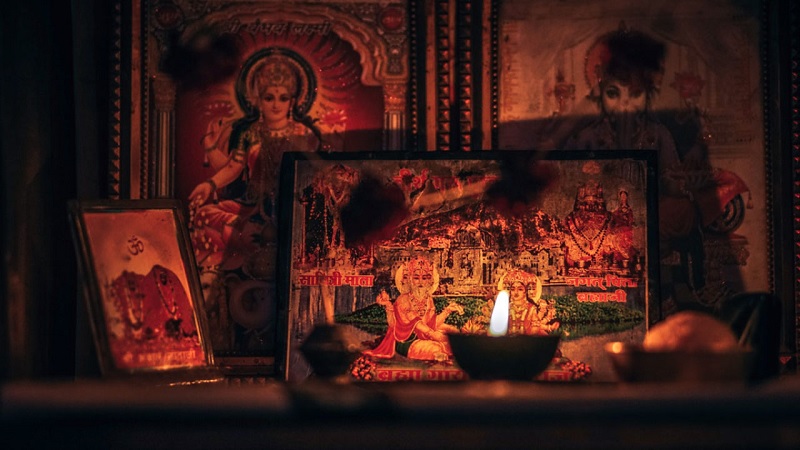 Image Courtesy:bizevdeyokuz.com
Image Courtesy:bizevdeyokuz.com
There is an overcharged religious atmosphere here today that upsets many people of the older generation and quite a sizable section of the youth. It adds a frenzy to religious observances that is new and quite unnerving. It asserts the Hindu faith very loudly on season and off season, and there is a barely concealed animus against other faiths. The skies are rent with strident religious chants and prayers from old, scratchy CDs relayed over large distances by loudspeakers that unsettle the nerves. That is most unfamiliar to us though some people do seem to lap it up.
In our younger days the caste system was quite rigid though the freedom movement and an emerging sense of democracy were loosening the caste shackles a little. The public schools served as the great meeting ground of children from well-to-do and indigent families, Hindu, Muslim and tribal groups. They were all playmates and good companions. The teachers were strict and caned all with generous strokes for not catching up with studies and breaches of discipline.
We were urged to be good upright members of society, though frankly we did not know what it meant.The school textbooks not only had stories from the Ramayana and the Mahabharata, but also stories about Akbar the great, Hatem Tai’s exemplary charity and life of Mohammed at some stage or other. So we did not think the Muslims were a race apart. We knew they were different but did not think them inferior or alien in some disagreeable or revolting way. That is how the mixed Assamese society had developed over centuries, and our social and political leaders also tended to promote that heritage. In those days no one had to harangue us to adopt such an attitude.
The old temples of Guwahati were in secluded spots covered in greenery and near murmuring streams or rivers. Apart from observances at home on religious holidays we used to visit those places of pilgrimage and drink in their serenity. Nowadays those places have become a crowded and raucous centres of uninterrupted religious frenzy, and certain elements are borrowed from events like the Kumbh Mela, with weird rites, much noise, and an invasion of sants with matted hair and beards half a yard long, some of them making inflammatory speeches on public address system against Islam and Muslims to milling crowds. I am no longer a believer in any religion but shall be content to live with that simple piety, but this new kind quite discomposes me and many of my friends agree. Many progressive youths also find it sick and condemn it though many other young men and women seem ready to die for it in some imagined battle.
I don’t quite know what Hinduism was like in other parts of India. When I came over to Kolkata for my graduation, I did find a difference. The caste-system was rigid, and often I had to tackle questions on my caste, sometimes ingeniously. Muslims appeared to be at a distance perhaps because of the trauma of partition, but the liberal rationalist strand of the great 19th century Bengal Renaissance still held ground, and my fellow-students, across a pretty stark Left-Right divide, were prepared to argue dispassionately on the merits of any issue. A senior contemporary of mine at Presidency, Surajit Dasgupta later devoted much of his life promoting Hindu-Muslim unity and the syncretic heritage of Bengal. Hara Prasad Shastri, belonging to pre-independence times, an orthodox Brahmin scholar of enormous learning and renown, could still argue that the heavily Sanskritised Bengali of our time had actually shed old Bengali usage that showed much Perso-Arabic influence. That lost heritage must have been a product of a lot of vigorous interaction.
The places of pilgrimage in Northern India drawing thousands of devotees every day were apparently quite different in character. They were important commercial centres as well as thriving places for study of scriptures, philosophy and Hindu theology, and in some cases, of music. So there was noise and bustle as well a restlessness in the air that was unfamiliar to me. There was a lot of religious exploitation and some fast practices and cheating. Still when I stayed with a friend, scion of an old family residing in Benares (since re-named Varanasi) for generations, soon after the demolition of the Babri Masjid, I found him quietly disgusted. When in the morning I walked down an old part of the city in an area called Sogoliya, (if after such a long period of time I have it right), and mingled with the crowd drawing them into conversation I found few who approved of it. But the noise then was that ALL Hindus rejoiced in that act.
So what has come to pass? Has an evil spirit so ubiquitous in our popular myths and legends, come to possess us?
*The author is a highly respected Assamese intellectual, a literary critic and social-scientist from Assam. Views expressed are the author’s own.
Other pieces by Dr. Hiren Gohain:
When the State conspires against its Citizens
Politics of Micromanagement
Usual suspects!